华为LBBP基带处理板技术参数/报价
企业档案
会员类型:初级版会员

已获得易推广信誉 等级评定
(0 -40)基础信誉积累,可浏览访问
(41-90)良好信誉积累,可接洽商谈
(91+ )优质信誉积累,可持续信赖
易推广初级版会员:7年
最后认证时间:
注册号: 【已认证】
法人代表: 【已认证】
企业类型:经销商 【已认证】
注册资金:人民币万 【已认证】
产品数:244
参观次数:809073
手机网站:http://m.yituig.com/c133773/
商铺地址:http://
详细内容
华为LBBP基带处理板技术参数/报价
LBBP(LTE BaseBand Processing board type d)
TD-LTE 产品的新一代基带处理板,主要实现基带信号处理功能,提供6 个SFP+光口,可通过光纤连接RRU ,传输业务数据、时钟和同步信号,支持9.8304Gbit/s速率,兼容6.144Gbit/s和2.5Gbit/s;提供1 个QSFP 接口,可用于与其他基带板进行互联,实现基带资源共享
WBBP只知道是WCDMA的基带处理板,其他不知~
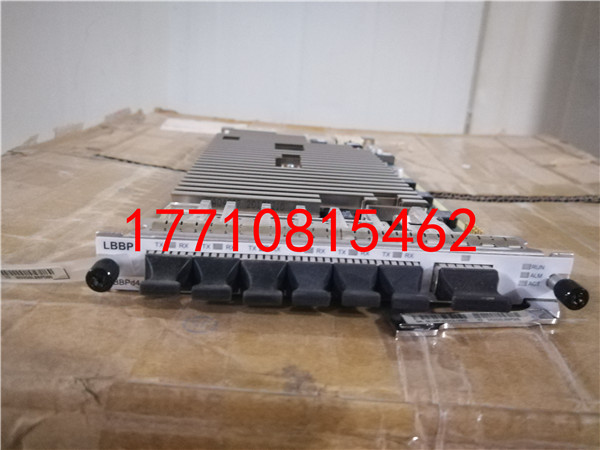
基带资源处理接口板,能处理RU业务并为RU提供光接口。
追问
你知道LBBP和WBBP的全称是什么吗?
追答
=。= 就是基带处理板啊
TE中UBBP和LBBP的区别,还有具体什么时候用UBBP、什么时候LBBP、以及UBBP和LBBP具体的槽位问题TDLAOFD-001001 LTE-A引入包
TDLAOFD-00100111 频段内下行两载波聚合
TDLAOFD-00100102 CAT 6终端支持
TDLAOFD-00100104 CAT 7终端支持
TDLAOFD-00100105 CAT 9终端支持
TDLAOFD-00100106 CAT 10终端支持
TDLAOFD-001002 40MHz带宽内下行两载波聚合
TDLAOFD-070201 灵活载波聚合
TDLAOFD-081405 下行3载波聚合
TDLAOFD-081404 下行4载波聚合(Trial)
TDLAOFD-081407 上行2载波聚合(Trial)
MRFD-101231 FDD+TDD载波聚合(LTE TDD)(Trial)
Trial特性是指无需支付license费用并免费使用的特性,免费的期限是当前版本。在下一个版本华为可根据特性的使用情况删除或改为可选特性。如果改为可选特性,那么需要在下个版本开始购买该特性的license。
客户在使用体验特性的时候需要和华为签署试用免责MOU声明。
本文中的MO、参数、告警和性能指标与本文档发布时的*新软件版本一致。如需获取当前软件版本的MO、参数、告警和性能指标信息,请参见随当前版本配套发布的产品文档。

本文档适用于LTE (TDD),文中提及的全称”LTE”或”eNodeB”均指LTE (TDD)制式。RRU3936为室外型射频拉远单元,是分布式基站的射频部分,可靠近天线安装。RRU3936主要完成基带信号和射频信号的调制解调、数据处理、合分路等功能。RRU3936采用SDR(Software Defined Radio)技术,通过不同的软件配置可以支持在GU、GL双模制式下工作。
RRU3936模块软件为SRAN8.0版本,该射频模块软件版本对于MBTS、MBSC和OSS配套网元向前兼容N-1和N-2版本,因此RRU3936模块可在产品SRAN6.0、SRAN7.0和SRAN8.0版本下使用,以上三个产品版本中均包含RRU3936模块软件组件。RRU3936模块在这三个产品版本下使用,对产品KPI指标无影响。
1.1 外观
RRU3936外观如图1-1所示。
1.2 物理接口
RRU采用模块化结构,对外接口分布在模块底部和配线腔中。
RRU3936面板接口如图1-2和表1-1所示。
图1-1 RRU3936面板接口图
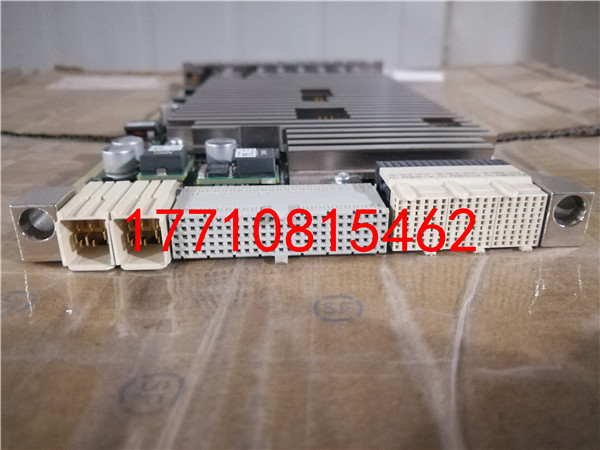
表1-1 RRU3936物理接口
接口类型连接器类型数量说明
射频接口DIN2用于连接天馈系统
射频互联接口DB2W21用于射频模块互联
CPRI接口DLC2用于连接BBU3900
电源接口快速安装型母端(压接型)1用于-48V电源输入
RET接口DB91用于连接RCU
告警接口DB151用于引入外部设备的告警信号
2 技术指标
2.1 频段
表2-1 RRU3936频段
类型频段(MHz)接收频段(MHz)发射频段(MHz)IBW(MHz)
RRU3936850824~849869~89425
900880~915925~96035
890~915935~96025
18001710~17851805~1880GSM: 35
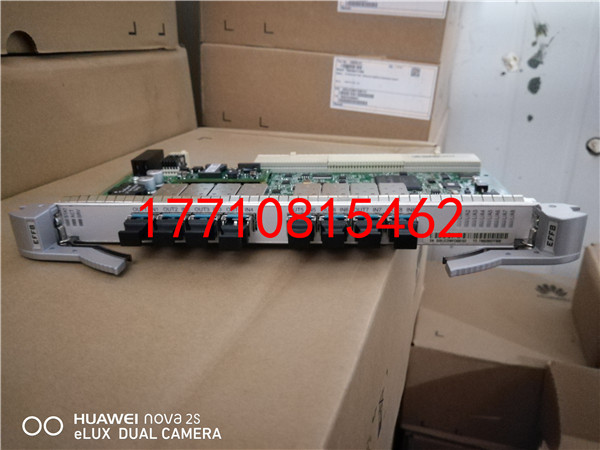
LTE: 40
GL: 35
19001850~19101930~1990GSM: 35
UMTS/LTE/UL: 40
GU/GL: 35
2.2 容量
表2-1 单制式容量
制式容量
GSM每个RRU3936支持8载波。
UMTS(850/900/1900MHz频段支持)每个RRU3936支持6载波。
LTESRAN7.0(1800/1900MHz频段支持):每个RRU3936支持2载波。
表2-2 多制式容量
制式容量
GSM+UMTS详细规格请参见表2-7。
GSM+LTESRAN7.0(1800/1900MHz频段支持):详细规格请参见表2-8。
UMTS+LTESRAN7.0(仅1900MHz频段支持)详细规格请参见表2-9。
2.3 接收灵敏度
表2-1 接收灵敏度
制式频段(MHz)单天线接收灵敏度(dBm)双天线接收灵敏度(dBm)四天线接收灵敏度(dBm)
GSM850-113.4-116.2-118.9(理论值)
900-113.7-116.5-119.2(理论值)
1800-114-116.8-119.5(理论值)
1900-113.7-116.5-119.2(理论值)
UMTS850-125.5-128.3-131.0
900-125.8-128.6-131.3
1900-125.8-128.6-131.3
LTE1800-106.6-109.4-112.1
1900-106.3-109.1-111.8

l GSM的接收灵敏度是依据3GPP TS51.021建议的测试方法,13kbit/s通道速率,误码率BER(Bit Error Ratio)不超过2%,天线连接器测得的接收灵敏度。
l UMTS的接收灵敏度是依据3GPP TS25.104建议的测试方法,12.2kbit/s通道速率,误码率BER(Bit Error Ratio)不超过0.001,天线连接器测得的接收灵敏度。
l LTE的接收灵敏度是依据3GPP TS 36.104建议的测试方法,基于5MHz带宽,FRC A1-3 in Annex A.1(QPSK,R=1/3,25RB)标准测得的接收灵敏度。

2.4 典型输出功率
l RRU3936工作在GSM场景,900MHz/1800MHz频段顺从EN 301 502 V9.2.1标准。RRU3936工作在UMTS、LTE、MSR场景,900MHz/1800MHz顺从ETSI EN 301 908 V5.2.1及3GPP TS 37.104标准。
l RRU3936工作在GSM场景:S1配置时每载波输出功率为80W,当输出功率配置为80W或60W时,需要购买对应的80W或60W功率license才能获得。
l RRU3936在海拔3500m~4500m时,功率值回退1dB;RRU3936在海拔4500m~6000m时,功率值回退2dB。
l 站间距、频率复用因子、功控算法、流量模型等因素会影响动态功率分配的增益,但是大多数情况下,网络规划可以基于动态功率分配的功率指标进行设计。
l 使用功率共享功能时,必须打开DTX和功率控制开关。此外,功率共享与同心圆、Co-BCCH、主B频率紧密复用、增强型测量报告在GBSS8.1版本互斥,在GBSS9.0及后续版本可以同时使用。功率共享与IBCA、动态MAIO、RAN sharing、双时隙小区在GBSS8.1、GBSS9.0及后续版本暂不支持同时使用。
l 功率共享时假设小区内的终端随机分布。
l *表示硬件ready。
l 输出功率表中的“每载波输出功率”为保证网络性能下支持的输出功率。
RRU3936典型输出功率如表2-5、表2-6、表2-7、表2-8和表2-9所示。
表2-1 RRU3936典型输出功率(900MHz/1800MHz/850MHz/1900MHz,GSM制式和UMTS制式)
GSM载波数UMTS载波数GSM每载波输出功率(W)GSM每载波输出共享功率(W)UMTS每载波输出功率(W)
1080800
2040400
3027310
4020270
5016200
6012200
7010160
807120
010080
020040
030025
040020
05*0016*
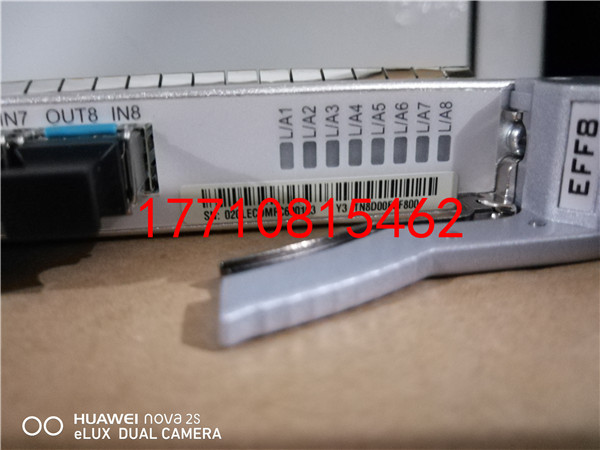
06*0012*
表2-2 RRU3936典型输出功率(1800MHz/1900MHz,LTE制式)
LTE载波数LTE每载波输出功率(W)
15/10/15/20MHz: 60
1.4/3MHz: 40
21.4/3/5/10MHz: 40
① 表示从SRAN7.0开始支持。
表2-3 RRU3936典型输出功率(900MHz/850MHz/1900MHz,GU MSR)
GSM载波数UMTS载波数GSM每载波输出功率(W)UMTS每载波输出功率(W)
114040
124020
213020
212040
222020
312020
321610
3①2①13①20①
411220
421210
511020
521010
611010
62810
71810
l GSM载波数小于5载波时,LTE带宽为1.4/3/5/10/15/20MHz。
l GSM载波数大于4载波时,LTE带宽为1.4/3/5/10/15MHz。
表2-4 RRU3936典型输出功率(1800MHz/1900MHz,GL MSR)
GSM载波数LTE载波数GSM每载波输出功率(W)LTE每载波输出功率(W)
114040
212040
213020
312020
411220
511020
611010
71810
表2-5 RRU3936典型输出功率(1900MHz,UL)
UMTS载波数LTE载波数UMTS每载波输出功率(W)LTE每载波输出功率(W)
114040
212040
213020
312020
2.5 功耗
l 典型功耗和功耗均指环境温度为25℃时的功耗值。
l GSM典型功耗是负荷30%的功耗值, GSM功耗是负荷100%的功耗值。
l UMTS典型功耗是负荷40%的功耗值,UMTS功耗负荷100%的功耗值。
l LTE典型功耗是负荷50%的功耗值,功耗是负荷100%的功耗值。
l 本节提供整站功耗。其中,BBU配置如下:
§ GSM制式:配置1块GTMU;
§ UMTS制式:3x1和3x2场景,配置1块UMPTb1+1块WBBPf3;
§ LTE(FDD)制式:1载波场景配置1块UMPTb1+1块LBBPd1。
表2-1 DBS3900功耗(Ver.D) (-48V)(配置RRU3936,850MHz)
制式配置每载波输出功率(W)典型功耗(W)功耗(W)
GSMS2/2/220555655
S4/4/4206801000
UMTS3x120500560

3x220595740
GSM+UMTSGSM S2/2/2 + UMTS 3x1GSM: 20
UMTS: 20775940
GSM S3/3/3 + UMTS 3x1GSM: 20
UMTS: 208451105
表2-2 DBS3900功耗(Ver.D) (-48V)(配置RRU3936,900MHz)
制式配置每载波输出功率(W)典型功耗(W)功耗(W)
GSMS2/2/220540635
S4/4/420655965
UMTS3x120485550
3x220580715
GSM+UMTSGSM S2/2/2 + UMTS 3x1GSM: 20
UMTS: 20750910
GSM S3/3/3 + UMTS 3x1GSM: 20
UMTS: 208151070
表2-3 DBS3900功耗(Ver.D) (-48V)(配置RRU3936,1800MHz)
制式配置每载波输出功率(W)典型功耗(W)功耗(W)
GSMS2/2/220590695
S4/4/4207251020
LTE3x10MHz, 1 carrier20505570
GSM+LTEGSM S2/2/2 + LTE 3x10MHz, 1 carrierGSM:20
LTE:20810975
GSM S3/3/3 + LTE 3x10MHz, 1 carrierGSM:20
LTE:208901150
表2-4 DBS3900功耗(Ver.D) (-48V)(配置RRU3936,1900MHz)
制式配置每载波输出功率(W)典型功耗(W)功耗(W)
GSMS2/2/220590695
S4/4/4207251020
UMTS3x120500565
3x220600740
LTE3x10MHz, 1 carrier20505565
GSM+UMTSGSM S2/2/2 + UMTS 3x1GSM: 20
UMTS: 20775940
GSM S3/3/3 + UMTS 3x1GSM: 20
UMTS: 208501110
GSM+LTEGSM S2/2/2 + LTE 3x10MHz, 1 carrierGSM:20
LTE:20795960
GSM S3/3/3 + LTE 3x10MHz, 1 carrierGSM:20
LTE:208701130
UMTS+LTEUMTS 3x2 + LTE 3x10MHz, 1 carrierUMTS:20
LTE:20790990
2.6 电源
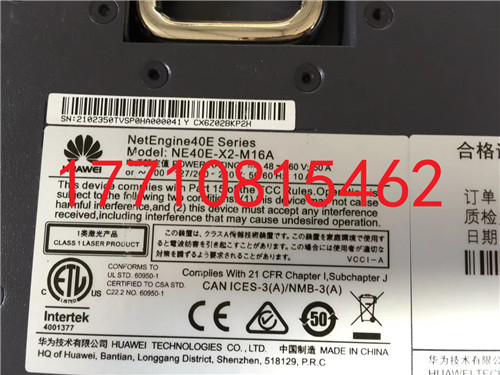

表2-1 电源
项目指标
输入电源-48V DC,电压范围:-36V DC~-57V DC
RRU3936可通过外置AC/DC电源模块或OPM15M支持交流应用场景,详细信息请参见《AC/DC电源模块 用户指南》和《OPM15M 用户指南》。
2.7 整机规格
RRU3936默认配置为不含外壳。
表2-1 整机规格
项目指标
尺寸(高×宽×深)400mm × 300mm × 100mm(不含外壳)
重量14 kg(不含外壳)
1.1 接口能力
表1-1 CPRI接口能力
项目指标
CPRI接口数量2个
CPRI接口速率1.25Gbit/s或者2.5Gbit/s

支持的CPRI组网方式星型、链型、双星形
级联能力CPRI MUX:
l GU:6级
l GL:4级
l UL:4级
与BBU之间的拉远能力l GU(双星形/CPRI MUX):40km
l GL/UL(双星形/CPRI MUX):根据LTE的基带处理板类型的不同,拉远能力如下
§ LBBPd1/UBBPd3:20km
§ LBBPd2/UBBPd4:40km
§ LBBPd3/UBBPd5/UBBPd6:
- LTE小区数 ≤ 3:40km
- LTE小区数 > 3:20km
2.8 环境指标
根据RRU安装场景、业务负载、载波配置的不同,当RRU工作在宣称工作温度10℃范围内时,会存在输出功率暂时降低的情况。
表2-1 环境指标
项目指标
工作温度-40°C~+50°C (有太阳辐射)
-40°C~+55°C (无太阳辐射)
相对湿度5% RH~100% RH
绝对湿度1 g/m³~30 g/m³
气压70 kPa~106 kPa
运行环境遵循标准:
l 3GPP TS 45.005
l 3GPP TS 25.141
l 3GPP TS 36.141

l 3GPP TS 37.141
l ETSI EN 300019-1-4 V2.1.2 (2003-04) Class 4.1: "Non-weather protected locations."
防震保护NEBS GR63 zone4
保护级别IP65
HUAWEI LBBP baseband processing board technical parameters / quotation, HUAWEI LBBP baseband processing board technical parameters / quotation

Technical parameters / quotations of HUAWEI LBBP baseband processing board
LBBP (LTE BaseBand Processing board type D)
The new generation baseband processing board of TD-LTE products mainly realizes baseband signal processing function, provides 6 SFP+ light ports, can connect RRU, transmit business data, clock and synchronous signal through optical fiber, support 9.8304Gbit/s rate, 6.144Gbit/s and 2.5Gbit/s, provide 1 QSFP interfaces, which can be used with other baseband boards. Interconnection and sharing of baseband resources
WBBP only knows the baseband processing board of WCDMA.
1532420767214007.jpg
The baseband resource processing interface board can handle RU services and provide optical interfaces for RU.
Inquiries
Do you know what the full name of LBBP and WBBP is?
Answer and answer
=. = it's the baseband processing board.
The difference between UBBP and LBBP in TE is also the specific time when UBBP, when LBBP, and UBBP and LBBP specific slot problems are introduced into TDLAOFD-001001 LTE-A.
Two carrier aggregation in TDLAOFD-00100111 band
TDLAOFD-00100102 CAT 6 terminal support
TDLAOFD-00100104 CAT 7 terminal support
TDLAOFD-00100105 CAT 9 terminal support
TDLAOFD-00100106 CAT 10 terminal support
Downlink two carrier aggregation in TDLAOFD-001002 40MHz bandwidth
TDLAOFD-070201 flexible carrier aggregation
TDLAOFD-081405 downlink 3 carrier aggregation

TDLAOFD-081404 downlink 4 carrier aggregation (Trial)
TDLAOFD-081407 uplink 2 carrier aggregation (Trial)
MRFD-101231 FDD+TDD carrier aggregation (LTE TDD) (Trial)
Trial characteristics refer to the characteristics of free license, which are free of charge, and the free period is the current version. In the next version, HUAWEI can be deleted or changed to optional features based on its usage. If you change it to optional features, you need to purchase the license of the feature in the next version.
Customers need to sign the trial disclaimer MOU statement with HUAWEI when they use experience characteristics.
The MO, parameters, alerts and performance indicators in this article are consistent with the latest version of the software published in this document. For information about the MO, parameters, alerts and performance indicators of the current software version, please refer to the product documentation that is released along with the current version.
1532420768535131.jpg
This document is applicable to LTE (TDD). The full name "LTE" or "eNodeB" mentioned in the article refers to the LTE (TDD) system. RRU3936 is the outdoor RF remote unit, which is the RF part of the distributed base station, which can be installed near the antenna. RRU3936 mainly completes the modulation and demodulation of baseband signal and radio frequency signal, data processing, combination and shunting. RRU3936 adopts SDR (Software Defined Radio) technology, and can support GU and GL dual-mode system through different software configurations.
The RRU3936 module software is a version of SRAN8.0, the software version of the RF module is compatible with the N-1 and N-2 versions of the MBTS, MBSC, and OSS network elements, so the RRU3936 module can be used in the product SRAN6.0, SRAN7.0, and SRAN8.0 versions, and the RRU3936 module software components are included in the above three product versions. The use of the RRU3936 module under these three product versions has no effect on the KPI index of the product.
1.1 appearance
The RRU3936 appearance is shown in Figure 1-1.
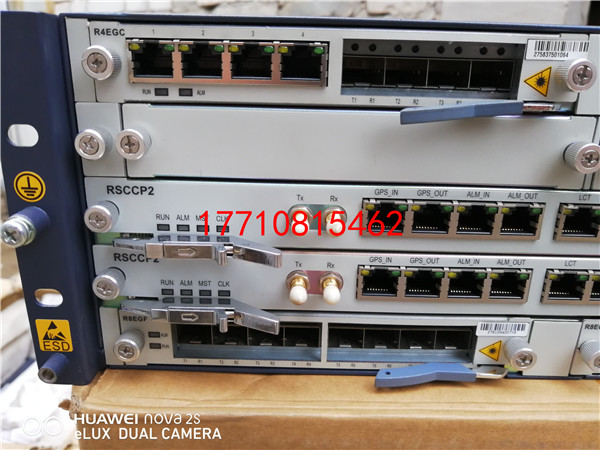
1.2 physical interface
RRU adopts modular structure, and the external interface is distributed in the bottom of the module and the wiring cavity.
The RRU3936 panel interface is shown in figures 1-2 and Table 1-1.
Figure 1-1 RRU3936 panel interface diagram
1532420768959761.jpg
Table 1-1 RRU3936 physical interface
Description of the number of interface type connector types
The radio frequency interface DIN 2 is used to connect the sky feed system
RF interconnect interface DB2W2 1 for RF module interconnection
The CPRI interface DLC 2 is used to connect the BBU3900
Power interface fast mounting type parent (crimping type) 1 for -48V power input
The RET interface DB9 1 is used to connect the RCU
Alarm interface DB15 1 alarm signal for introducing external devices
2 technical indicators
2.1 band
Table 2-1 RRU3936 band
Type frequency band (MHz) receiving frequency band (MHz) transmit band (MHz) IBW (MHz)
RRU3936 850824~849869 ~ 89425
900880~915925 ~ 96035
890~915935 ~ 96025
18001710~17851805 ~ 1880 GSM: 35
1532421543591638.jpg
LTE: 40
GL: 35
19001850~19101930 ~ 1990 GSM: 35
UMTS/LTE/UL: 40
GU/GL: 35
2.2 capacity
Table 2-1 single production capacity
Production capacity
GSM supports 8 carriers per RRU3936.
UMTS (850/900/1900MHz band support) each RRU3936 supports 6 carriers.
LTE SRAN7.0 (1800/1900MHz band support): each RRU3936 supports 2 carriers.
Table 2-2 multi mode capacity
Production capacity
For detailed specification of GSM+UMTS, please refer to table 2-7.
GSM+LTE SRAN7.0 (1800/1900MHz band support): see table 2-8 for detailed specifications.
Please refer to table 2-9 for detailed specifications of UMTS+LTE SRAN7.0 (supported by 1900MHz band only).
2.3 receiving sensitivity
Table 2-1 receiving sensitivity

Single frequency antenna receiving sensitivity (dBm) dual antenna receiving sensitivity (dBm) four antenna receiving sensitivity (dBm) in standard band (MHz)
GSM 850 -113.4 -116.2 -118.9 (theoretical value)
900 -113.7 -116.5 -119.2 (theoretical value)
1800-114 -116.8 -119.5 (theoretical value)
1900 -113.7 -116.5 -119.2 (theoretical value)
UMTS 850 -125.5 -128.3 -131.0
900 -125.8 -128.6 -131.3
1900 -125.8 -128.6 -131.3
LTE 1800 -106.6 -109.4 -112.1
1900 -106.3 -109.1 -111.8
1532421543278350.jpg
The reception sensitivity of L GSM is based on the test method proposed by 3GPP TS51.021, the 13kbit/s channel rate, the error rate BER (Bit Error Ratio) not more than 2%, and the receiving sensitivity measured by the antenna connector.
The reception sensitivity of L UMTS is based on the test method proposed by 3GPP TS25.104, the 12.2kbit/s channel rate, the error rate BER (Bit Error Ratio) is not more than 0.001, and the antenna connector is measured.
打开手机主界面,找到设置按钮,点击进入设置选项
华为手机如何打开USB调试模式
在设置中找到“关于手机”,如下图中所示,点击进入关于手机选项
华为手机如何打开USB调试模式
点击进入“关于手机”后,可以打开下图页面,在下图中找到“版本号”,连续快速点击7次左右即可成功开启开发者模式
华为手机如何打开USB调试模式
按返回键返回上一页面,在设置页面中可以看到多了一个“开发者选项”按钮
华为手机如何打开USB调试模式
点击进入开发者选项,在开发者选项中选中USB调试,设置完成后就可以通过电脑给手机安装软件了。
华为手机如何打开USB调试模式
注意:如要关闭USB调试模式,只要将下图中的USB调试模式关闭即可。
华为手机如何打开USB调试模式
Open the main interface of the mobile phone, locate the settings button, and click enter setup option.
How HUAWEI handset opens USB debug mode
Find the "mobile phone" in the settings, as shown in the figure below, click on the phone options.
How HUAWEI handset opens USB debug mode
After clicking into "about the mobile phone", you can open the bottom page and find the "version number" in the next figure. You can successfully open the developer mode by clicking about 7 times in a fast and fast way.
How HUAWEI handset opens USB debug mode
Press the return key to return to the previous page. You can see more than one developer option button in the settings page.
How HUAWEI handset opens USB debug mode
Click on the developer option, select USB debugging in the developer option, and install the software through the computer after the setup is completed.
How HUAWEI handset opens USB debug mode
Note: if you want to close the USB debug mode, just close the USB debug mode in the following figure.
How HUAWEI handset opens USB debug mode
随着互联网化业务迅速发展,网络规模日益庞大,传统维护模式应对新的业务管理需求会面临运维效率低等问题。江苏联通在网络运维上向数字化、智能化转型,与华为在智能运维方向深化合作,通过IES(Infrastructure enabling system)智能排障解决方案实现全省无线域多厂商产品的统一告警监控、诊断及自愈,故障诊断成功率达90+%,极大的提升了运维效率。
江苏联通基于对业务的深刻理解,通过大量运维数据分析,分专业、分阶段细化项目目标,与华为共同推进了IES智能排障解决方案成功部署。
华为有全球1500+张网络的运维经验和完善的网络运维故障树模型,IES智能排障解决方案智能利用该模型能够对无线、IPRAN传输等领域中多厂商产品的告警进行关联分析和定界、定位,实现故障根因分析和自动愈合。
随着技术和业务的发展,网络变得更加复杂,数字化运维需求日益迫切,华为和江苏联通IES智能排障平台的成功实践,为行业运维转型提供了有价值经验;未来,还将不断丰富应用场景,助力运营商进一步提高运维效率,保证网络稳定。北京时间7月23日上午消息(蒋均牧)针对部分美国国会议员对华为与大学合作项目的批评质疑,华为轮值董事长徐直军日前开声,在英国《金融时报》上撰文予以反驳,称之为“无知(ill-informed)”;并着重向外界传递这样的信息——华为资助美国大学进行基础研究,研究成果将造福大众,不会对美国构成。
在文中,徐直军强调了学术自由的重要性,论述了大学与企业的合作对于科技进步的关键作用,并表示华为在提供支持时并不期望能获得直接商业回报,研究成果通过教授、博士和研究生们的论文形式公开发布。他特别指出,任何基础研究项目要造福社会是一个艰辛而且漫长的过程,需要大学与企业紧密合作,需要无数科学家、工程师们长期艰苦奋斗,他们的努力和贡献应该受到尊重,而不是肆意指责。
全文如下:
不久前,几名美国国会议员严厉地批评了华为,还要求美国教育部长调查华为与美国大学的基础科研合作项目是否会对美国国家安全构成。我认为这些行为显示了他们对科学的无知。*近在接受媒体采访时,我提到这些批评是“无知的”。
我并不想进行人身攻击。相反,我只是希望强调学术自由的重要性。学术自由是现代大学的基本属性,是一切科技进步的基石,有助于培养下一代科研人才。
学术自由是高等教育的基石。正是由于美国大学能保持学术自由,不受政治和外部因素干扰,才吸纳了全球*优秀的人才到美国学习和研究,成就了美国的全球技术领导者地位。
我是一位从事过基础研究的工学博士。根据美国国家科学基金会的定义,“基础研究”是指“致力于获取新知识或理念,但不考虑具体流程或产品应用的活动”。
企业的研发活动主要聚焦商业应用,而大学则关注数学、算法、材料科学等不太可能创造收益的应用。即使某个研究项目*终会产生回报,从理论研究到商业化可能需要花费数十年时间。
大学与企业的合作能够有效缩短这个过程。企业、学术界和研究机构之间的知识和资源交换(也称“知识转移”)已经成为推动科技进步的关键动力。
然而,过去十年间,美国联邦政府向大学研究项目提供的资金在持续下降,如今占大学总研究资金的比例低于50%。
余下的大部分资金来自华为等企业提供的赞助。华为向美国大学提供的研究资金相对有限,去年约为1,000万美元。但我们提供的支持正是大学所需要的,包括资金、场地和实验设备等支持。同时,我们也为在校研究生、大学生们创造了丰富的培训和实践机会。在提供这些支持的时候,我们并不期望能获得直接商业回报。
华为资助美国大学进行基础研究,研究成果将造福大众,并不会像外界批评所说的那样会对美国构。
我们与大学的研究成果通过教授、博士和研究生们的论文形式公开发布。
2017年,华为在研发领域投入138亿美元,过去十年华为的全球研发总投入超过600亿美元。华为在全球各国已经有近8万件获得授权,其中在美国授权近一万件,许多还是电信业的基本,这对数字经济发展也是一个贡献。
任何基础研究项目要造福社会是一个艰辛而且漫长的过程,需要大学与企业紧密合作,需要无数科学家、工程师们长期艰苦奋斗,他们的努力和贡献应该受到尊重,而不是肆意指责。
一个开放的政治领袖,应该要致力于维护美国大学的学术自由,才能推动美国的科技进步。同时,政治领袖要像全球科学家一样具备深度洞察力、好奇心和实事求是精神
With the rapid development of Internet business and the increasingly large scale of network, the traditional maintenance mode will face the problem of low operation and maintenance efficiency in response to new business management requirements. Jiangsu Unicom in network operation and maintenance to digital, intelligent transformation, and HUAWEI in the direction of intelligent operation and maintenance cooperation, through the IES (Infrastructure enabling system) intelligent scheduling solution to realize the unified alarm monitoring, diagnosis and self-healing of multi vendor products in the wireless domain of the province, the success rate of fault diagnosis is 90+%, greatly raised. Increase the efficiency of operation and maintenance.
Based on a profound understanding of business, Jiangsu Unicom, through a large number of operation and maintenance data analysis, divided the project goals in a professional and stage stage, and jointly promoted the successful deployment of the IES intelligent scheduling solution with HUAWEI.
HUAWEI has the operation and maintenance experience of the global 1500+ network and the perfect network operation and maintenance fault tree model. The intelligent IES scheduling solution can make use of the model to analyze and delimit the alarm of multi vendor products in the fields of wireless and IPRAN transmission, and realize the root cause analysis and automatic healing.
With the development of technology and business, the network becomes more complex and the demand of digital operation is becoming more and more urgent. The successful practice of HUAWEI and Jiangsu Unicom IES intelligent scheduling platform provides valuable experience for the transformation of industry and maintenance. In the future, it will continue to enrich the application scene, help the operators to further improve the efficiency of operation and maintenance, guarantee the efficiency of operation and maintenance. The network is stable. On the morning of July 23rd, Beijing time (Jiang Junmu), in response to some American congressmen's criticism of HUAWEI's cooperation with the University, Xu Zhijun, chairman of HUAWEI, refuted in the financial times, calling it "ill-informed", and focusing on the outside world. Information - HUAWEI supports US universities for basic research, which will benefit the public and will not pose a threat to the United States.
In this article, Xu stressed the importance of academic freedom and discussed the key role of cooperation between universities and enterprises for the progress of science and technology, and indicated that HUAWEI did not expect to obtain direct commercial returns when providing support, and the research results were published in the form of professors, doctorates and graduate students. He pointed out in particular that it is an arduous and long process for any basic research project to benefit the society. It requires a close cooperation between universities and enterprises, which requires a long and hard struggle of scientists and engineers, and their efforts and contributions should be respected rather than accusations.
The full text is as follows:
Not long ago, several U.S. congressmen severely criticized HUAWEI and asked the Secretary of education to investigate whether HUAWEI's basic scientific research partnership with American universities would pose a threat to the security of the United States. I think these behaviors show their ignorance of science. In recent interviews with the media, I mentioned that these criticisms were "ignorant".
I don't want to have a personal attack. On the contrary, I just want to emphasize the importance of academic freedom. Academic freedom is the basic attribute of modern universities, the cornerstone of all scientific and technological progress, and helps to train the next generation of scientific research personnel.
Academic freedom is the cornerstone of higher education. It is because American universities can maintain academic freedom and are not disturbed by political and external factors, so that the best talents in the world have been studied and studied in the United States, and the status of the global technology leaders in the United States has been achieved.
I am a doctor of Engineering in basic research. According to the National Science Foundation (National Science Foundation), "basic research" refers to "activities committed to acquiring new knowledge or ideas, but not considering specific processes or product applications."
The R & D activities of enterprises mainly focus on commercial applications, while universities are concerned about applications such as mathematics, algorithms, materials science and so on, which are unlikely to generate revenue. Even if a research project will eventually yield a return, it may take several decades from theoretical research to commercialization.
University and enterprise cooperation can effectively shorten the process. Knowledge and resource exchange among enterprises, academia and research institutions (also known as "knowledge transfer") have become the key driving force for scientific and technological progress.
However, over the past ten years, the federal government's funding for university research projects has continued to decline, and now it accounts for less than 50% of the total university research funding.
Most of the rest comes from sponsorship from companies such as HUAWEI. HUAWEI's research funding to American universities is relatively limited, which was about $10 million last year. But the support we provide is exactly what the university needs, including funding, venues and laboratory equipment. At the same time, we have created abundant training and practice opportunities for postgraduates and university students. When providing these support, we do not expect to get direct business returns.
HUAWEI supports American universities for basic research, which will benefit the public and will not pose a threat to the United States, as critics say.
Our research results are published publicly in the form of papers written by professors, doctorates and postgraduates.
In 2017, HUAWEI invested 13 billion 800 million US dollars in R & D field. Over the past ten years, HUAWEI has invested more than $60 billion in global research and development. HUAWEI has been authorized by nearly 80 thousand patents around the world, including nearly ten thousand patents authorized in the United States, and many of the basic patents in the telecommunications industry, which is also a contribution to the development of the digital economy.
It is an arduous and long process for any basic research project to benefit the society. It requires a close cooperation between universities and enterprises, which requires a long and hard struggle of scientists and engineers, and their efforts and contributions should be respected.










